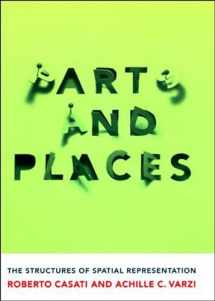
Parts and Places: The Structures of Spatial Representation
ISBN-13:
9780262517072
ISBN-10:
0262517078
Edition:
UK ed.
Author:
Roberto Casati, Achille C. Varzi
Publication date:
2003
Publisher:
Bradford Books
Format:
Paperback
248 pages
Category:
Labor & Industrial Relations
,
Economics
FREE US shipping
Book details
ISBN-13:
9780262517072
ISBN-10:
0262517078
Edition:
UK ed.
Author:
Roberto Casati, Achille C. Varzi
Publication date:
2003
Publisher:
Bradford Books
Format:
Paperback
248 pages
Category:
Labor & Industrial Relations
,
Economics
Summary
Parts and Places: The Structures of Spatial Representation (ISBN-13: 9780262517072 and ISBN-10: 0262517078), written by authors
Roberto Casati, Achille C. Varzi, was published by Bradford Books in 2003.
With an overall rating of 3.6 stars, it's a notable title among other
Labor & Industrial Relations
(Economics) books. You can easily purchase or rent Parts and Places: The Structures of Spatial Representation (Paperback) from BooksRun,
along with many other new and used
Labor & Industrial Relations
books
and textbooks.
And, if you're looking to sell your copy, our current buyback offer is $0.3.
Description
Thinking about space is thinking about spatial things. The table is on the carpet; hence the carpet is under the table. The vase is in the box; hence the box is not in the vase. But what does it mean for an object to be somewhere? How are objects tied to the space they occupy? In this book Roberto Casati and Achille C. Varzi address some of the fundamental issues in the philosophy of spatial representation. Their starting point is an analysis of the interplay between mereology (the study of part/whole relations), topology (the study of spatial continuity and compactness), and the theory of spatial location proper. This leads to a unified framework for spatial representation understood quite broadly as a theory of the representation of spatial entities. The framework is then tested against some classical metaphysical questions such as: Are parts essential to their wholes? Is spatial co-location a sufficient criterion of identity? What (if anything) distinguishes material objects from events and other spatial entities? The concluding chapters deal with applications to topics as diverse as the logical analysis of movement and the semantics of maps.


We would LOVE it if you could help us and other readers by reviewing the book
Book review

Congratulations! We have received your book review.
{user}
{createdAt}
by {truncated_author}


